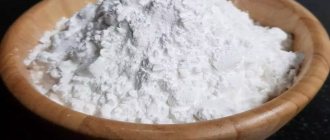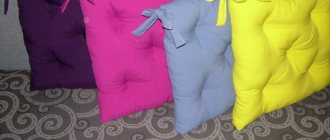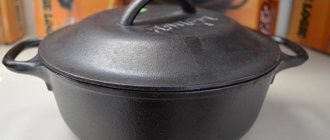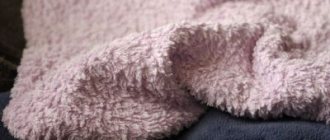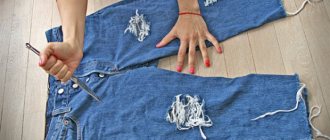How to clean a felt hat at home?
Today, things that were worn in the 20th century are extremely popular. One of these is a hat. It can be worn by both women and men; it goes well with both a classic coat and a leather jacket. Today, felt hats are very popular. But, like any thing, a headdress made of such material is susceptible to contamination. What needs to be done to make this wardrobe item look irresistible again?
Solutions options
Textile hats, as well as crocheted hats, can lose their shape. It is these products that need to be starched periodically. This can be done not only in the traditional way using starch, but also using other types of solutions.
Starch
The classic method involves preparing a solution from starch. You can use any type of product - potato, rice, corn.
The solution is prepared as follows:
- put water to boil;
- Stir starch in a small amount of cold water until a homogeneous suspension is obtained;
- pour the suspension into boiling water, constantly stirring the liquid;
- bring to a boil and cool.
Cooking proportions depend on the desired result. If you only need to slightly compact the hat material, take a teaspoon of starch per 1 liter of water. To give a clear shape to the headdress, a more concentrated version of the solution is required; for the same amount of liquid, take 1 tablespoon of dry product. If you need to give a knitted or textile hat a rigid shape, you need to take 2 tablespoons of dry product per liter of liquid.
With milk
To stiffen and whiten the hat, you can prepare a solution in milk. It is prepared like this:
- 800 ml of milk is put to boil;
- Stir 1 full tablespoon of rice starch into 200 ml of cold milk;
- pour starch suspension into boiling milk, stirring constantly;
- stir, bring to a boil and cool to 40 degrees.
If you add 0.25 teaspoon of salt to the hot milk-starch mixture, the hat will also acquire a beautiful shine.
Gelatin
Traditional starching is suitable for light-colored hats. If the headdress is dark, then whitish stains may remain on it. For dark hats you need to use gelatin.
Preparation of the solution:
- Pour 15-20 g of gelatin into a glass of cold water, leave for 30-40 minutes;
- heat the mixture until the swollen gelatin is completely dissolved, avoiding boiling;
- cool to a temperature of 35-40 degrees.
Treatment with a gelatin solution allows you to give the headdress its shape for a long time. But this method is not recommended for white hats, as they may acquire a yellowish tint.
Sugar
To stiffen knitted items, you can use a sugar solution. Preparation procedure:
- mix 900 ml of water and 120 g of granulated sugar, bring to a boil;
- stir 2 teaspoons of starch in 100 ml of cold water, pour the solution into the boiling syrup;
- stir, bring to a boil and cool.
The disadvantage of this method is that a hat treated with sugar syrup will become a “magnet” for wasps, bees and other insects.
Adhesive
To prepare the adhesive solution, PVA glue or stationery silicate glue is suitable. PVA is diluted with water to half its volume. A solution is prepared from silicate glue in the proportion of a teaspoon per glass of water.
Is it possible to iron felt with an iron?
Felt is used to make crafts, interior and wardrobe items, original jewelry, interesting accessories, bags, cases, gifts and toys. Craftswomen create real miracles using affordable materials.
Among the advantages of fabric, masters name the following:
- smooth structure;
- wide range of shades;
- the presence of sheets of different thicknesses;
- the same surface on the front and back sides;
- no fraying edges of the canvas.
The material is made from natural fluff by felting. Synthetic fibers are added to the composition to give the structure softness and plasticity. Felt, like any fabric, can be ironed, taking into account the following recommendations:
- Select the appropriate iron setting.
- Turn the product inside out, and the fleecy surface will not wrinkle under pressure.
- Prepare an ironing iron - a piece of natural fabric or a piece of gauze.
- First, check how the felt handles heat. Process the edge of an item or a sample of material.
Even if the optimal iron temperature was previously selected, it is better to check again. The device may overheat due to a malfunction of the microcontroller.
From fat and sweat
Fat can appear both from contact with food and from contact with the face. To get rid of unpleasant stains, use the following methods:
- rub the area where the stain appeared with a crust of rye bread;
- if the fat has appeared recently, then cover it with salt;
- If the stain remains on the felt fabric for a long time, it is necessary to use a more effective remedy - gasoline. Dampen a rag or napkin in it and blot the damaged area with it. It is important that the napkin or rag is slightly wetted with the composition, otherwise traces of it will remain on the hat ;
- Potato starch perfectly cleans grease stains. Take a potato, grate it, add purified gasoline to the resulting pulp and apply to the contaminated area. After a while, shake it off with a brush, and remove the remaining residue with a sponge soaked in water and citric acid diluted in it;
- dilute ammonia in water in equal proportions and treat the problem area;
- Use stain remover only if it is intended for colored fabrics.
Important! Before using this or that cleanser, test it on an area that is not visible.
Iron temperature
The choice of temperature depends on the texture of the fabric, so 3 main ironing programs are suitable for felt:
- Synthetic fibers have a low degree of creasing. At the minimum heating level of the iron sole, you can carefully process the item. This regime will not get rid of stubborn creases.
- You can iron woolen and half-woolen felt “on a double.” Within a few seconds of exposure, the fibers will straighten out and the wrinkles will disappear.
- The “three dots” mode requires attention. The fabric smooths out quickly, but sometimes deteriorates when overheated. At high temperatures, treat only problem areas with creases.
Using a steamer
Felt does not take well to water treatments, but will withstand careful treatment with hot steam. Interestingly, textile smoothing devices were first used specifically for processing felt hats. Hot steam does a good job of straightening the fibers of the material.
Structurally, the household appliance is quite simple. Over 80 years, manufacturers have improved home appliances by adding useful accessories: stands and holders. New steam generators, safe for different types of fabric, are distinguished by their careful treatment of textiles. This treatment will help prolong the joy of using felt items.
If the parts are connected with glue, the high temperature will ruin the item. It is better not to wash or steam such felt crafts. Glued beads and rhinestones can be carefully circumvented without exposing them to steam.




